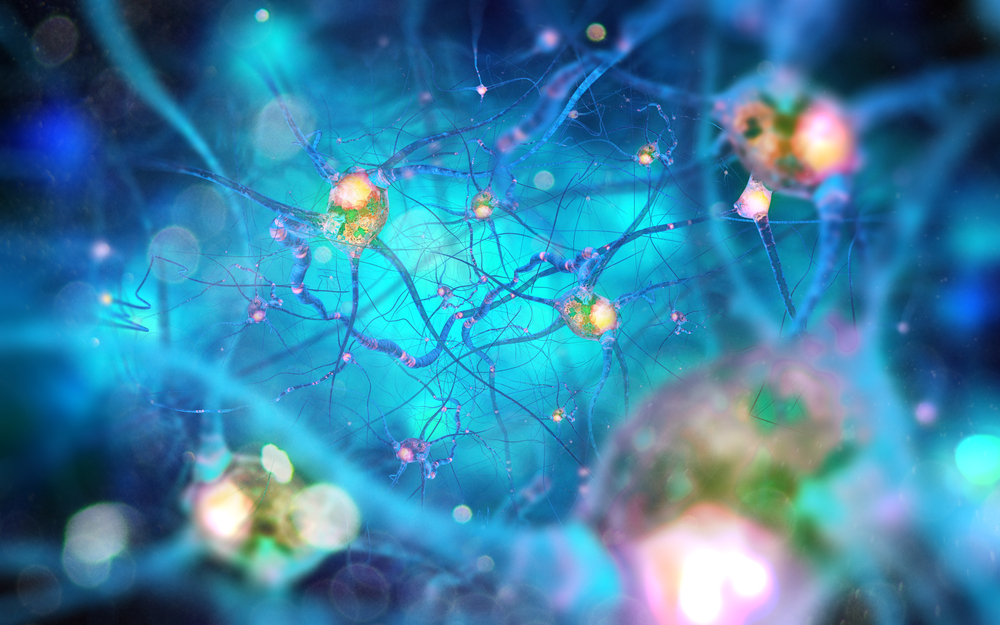Evidence Found That Proteins BMP5/7 May Help Slow Parkinson’s

Andrii Vodolazhskyi/Shutterstock
Scientists have found evidence that BMP5 and BMP7, two bone morphogenetic proteins (BMPs) that have been found to play a role in the development of dopamine-producing neurons, may help slow or even stop the progression of Parkinson’s disease.
They discovered in a mouse model of Parkinson’s that the two proteins were able to prevent the loss of dopamine-producing neurons triggered by the buildup of alpha-synuclein, a hallmark of the disease.
“These findings are very promising, since they suggest that BMP5/7 could slow or stop Parkinson’s disease progression. Currently, we are focusing all our efforts on bringing our discovery closer to clinical application,” Claude Brodski, MD, said in a press release. Brodski is head of the laboratory of Molecular Neuroscience at Ben-Gurion University (BGU) in Israel, and senior author of the study.
The team’s findings were reported in the study, “BMP5/7 protect dopaminergic neurons in an α-synuclein mouse model of Parkinson’s disease,” published in the journal Brain.
Parkinson’s is a progressive neurodegenerative disorder characterized by the gradual loss of dopamine-producing neurons located in the substantia nigra — a brain region responsible for movement control — driven by the accumulation of toxic clumps of the protein alpha-synuclein.
Over time, the gradual loss of these neurons causes patients to experience a series of motor impairments. While many therapies have been developed in recent years to help ease Parkinson’s symptoms, they are not effective at slowing or halting disease progression.
Neurotrophic factors — proteins and other molecules that promote neuron development and survival — are currently viewed as promising candidates to counteract neurodegeneration in Parkinson’s.
In a previous study, the same group of researchers demonstrated that BMP5 and BMP7, two protein growth factors, play a key role in the development of dopamine-producing neurons, which are lost gradually over the course of Parkinson’s.
However, researchers still did not know if these proteins could protect neurons against the toxic clumps of alpha-synuclein that gradually accumulate over the course of Parkinson’s.
To answer this question, they injected viral vectors carrying genes that contained information to make BMP5/7 directly into the substantia nigra of a mouse model of Parkinson’s. After doing so, they found that both proteins were able to protect dopamine-producing neurons from being destroyed by toxic clumps of alpha-synuclein.
To investigate if these proteins also could ease some of the animals’ motor symptoms, investigators subjected mice to two different motor tests — the cylinder and pole tests — to evaluate the degree of their motor impairments. The cylinder test is designed to evaluate animals’ front paw use when investigating their environment, while the pole test evaluates their dexterity at grabbing and maneuvering a pole to descend to their cage.
In both tests, the performance of treated mice surpassed that of control animals (that were injected with a viral vector containing only a gene for a green fluorescent protein), confirming that BMP5/7 also could ease motor impairments associated with the disease.
“Indeed, we found that BMP5/7 treatment can, in a Parkinson’s disease mouse model, efficiently prevent movement impairments caused by the accumulation of alpha-synuclein and reverse the loss of dopamine-producing brain cells,” Brodski said.
They also showed treatment with BMP5/7 lowered the buildup of alpha-synuclein aggregates inside dopamine-producing neurons, and reduced gliosis — excessive proliferation of nerve cells that support and protect neurons, in response to damage to the central nervous system (the brain and spinal cord).
In contrast, loss of BMP5/7 led to the accumulation of alpha-synuclein, “suggesting that the therapeutic mechanism of action of BMP5/7 involves the reduction of [alpha]-synuclein accumulation.”
These findings led the team to believe that BMP5/7 has potential to be used to slow, or even halt, Parkinson’s progression. BGN Technologies, BGU’s technology transfer company, already has filed multiple patent applications covering the discoveries of the new study.
“There is a vast need for new therapies to treat Parkinson’s disease, especially in advanced stages of the disease. Dr. Brodski’s findings, although still in their early stages, offer a disease-modified drug target that will address this devastating condition. We are now seeking an industry partner for further development of this patent pending invention,” said Galit Mazooz Perlmuter, PhD. senior vice president of business development at BGN Technologies.






